If you’re having trouble getting your little one to eat variety or to try foods other than their current few faves, here are some ideas for you to try—and tips to know when to reach out for help.
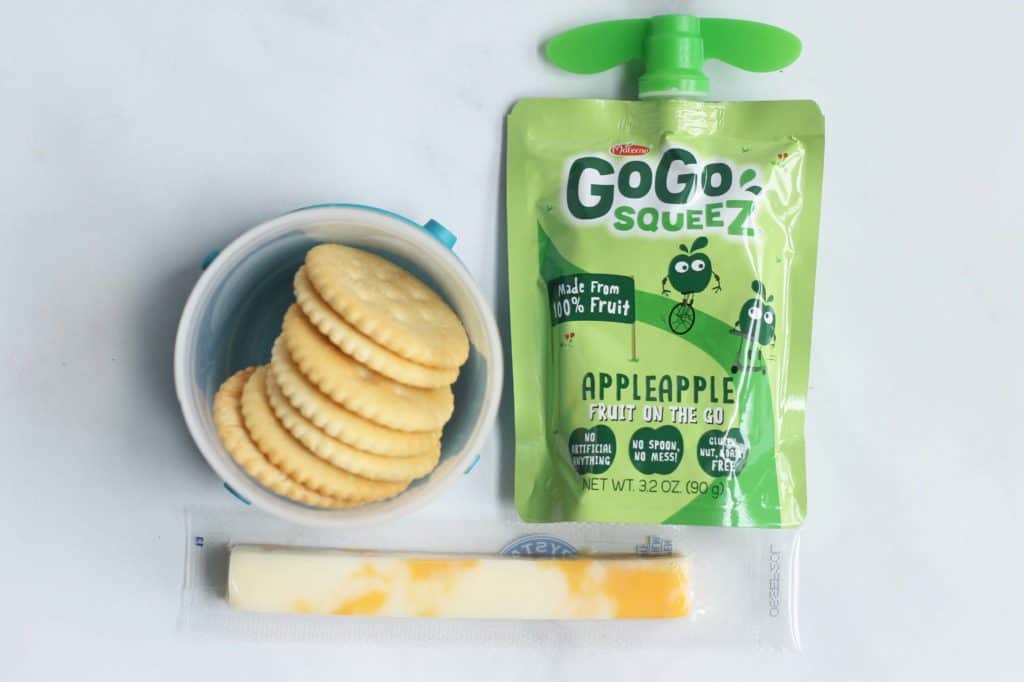
Picky Eating
Oh toddlers, with their quirky food habits. I’m sure that your toddler has his or her favorite foods, and that those favorite foods sometimes do an about-face when you least expect it. Let’s remember:
It’s normal for your toddler to want to eat what’s familiar to them.
It’s normal for them to prefer certain foods over others.
It’s normal for some textures to be tricky.
This is part of the process of them learning to eat a variety of food—and of your process teaching them to be a capable, confident eater. It all takes time (though I realize that knowing that does not make the logistics of feeding them dinner easier!)
Your toddler won’t eat? Help is here!
Sign up for our email updates to get tips and ideas sent to your inbox.
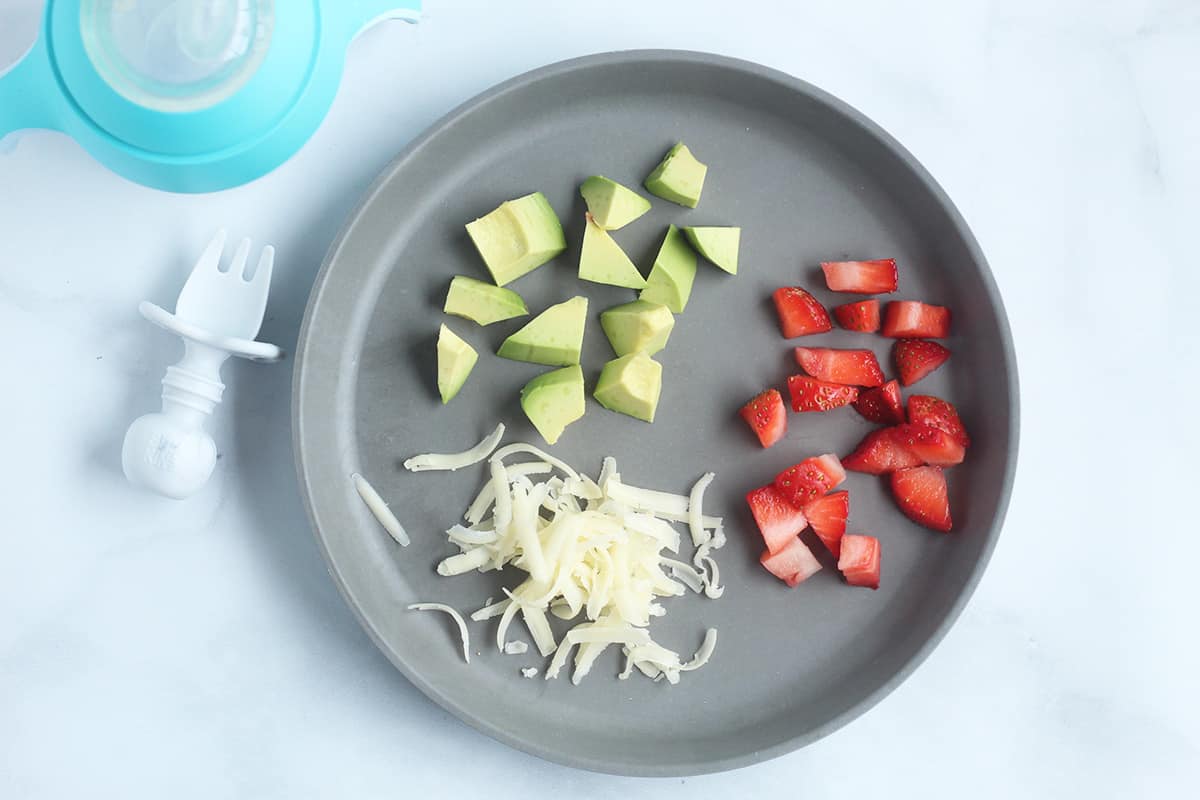
Best Tips for Helping Toddlers Eat a Range of Foods
Here are some things to try if you’re wanting to expand your child’s eating out from just a narrow selection of foods.
1. Embrace their Favorites, and expect them to change
It’s really normal for little kids to have phases when they only want certain foods. It’s also normal for those preferences to change. So I fully embrace buying their favorite foods and also I expect them to change. (So I never buy favorite snacks in bulk, myself!) Which is to say, a child who loves strawberries for weeks and then wants no strawberries isn’t picky. They are simply through their strawberry loving phase.
I find that this perspective shift away from labeling every kid who doesn’t want a food as “picky” can help us see feeding our kids as less of a fight, and more of a journey.
2. Zoom way out
Intake is always more varied when we look at what we’re eating over a whole day or a whole week, so always try to zoom out and focus less on each bite. This can help set your mind at ease.
3. Offer favorites with other foods
Try to include another food or two with their favorite—grab a banana or some cheese, or whatever you happen to have—so they are always reminded that we sometimes eat other foods. It’s okay if they don’t always eat it, but you might just be surprised.
This is also a simple way to help them eat a variety of food groups throughout the day and fill their bellies between meals and snacks.
4. MOdel Eating a variety
There’s a lot of benefit to the kids seeing us eat a range of foods over time, so you can know that they are likely being exposed to that without you even trying. They’ll see you eating different foods and will understand that eating different foods is normal.
And then you can help them follow your lead at times by offering two choices to keep their little brains from being overwhelmed is a great option. Say something like: “Would you like a banana or applesauce today?”.
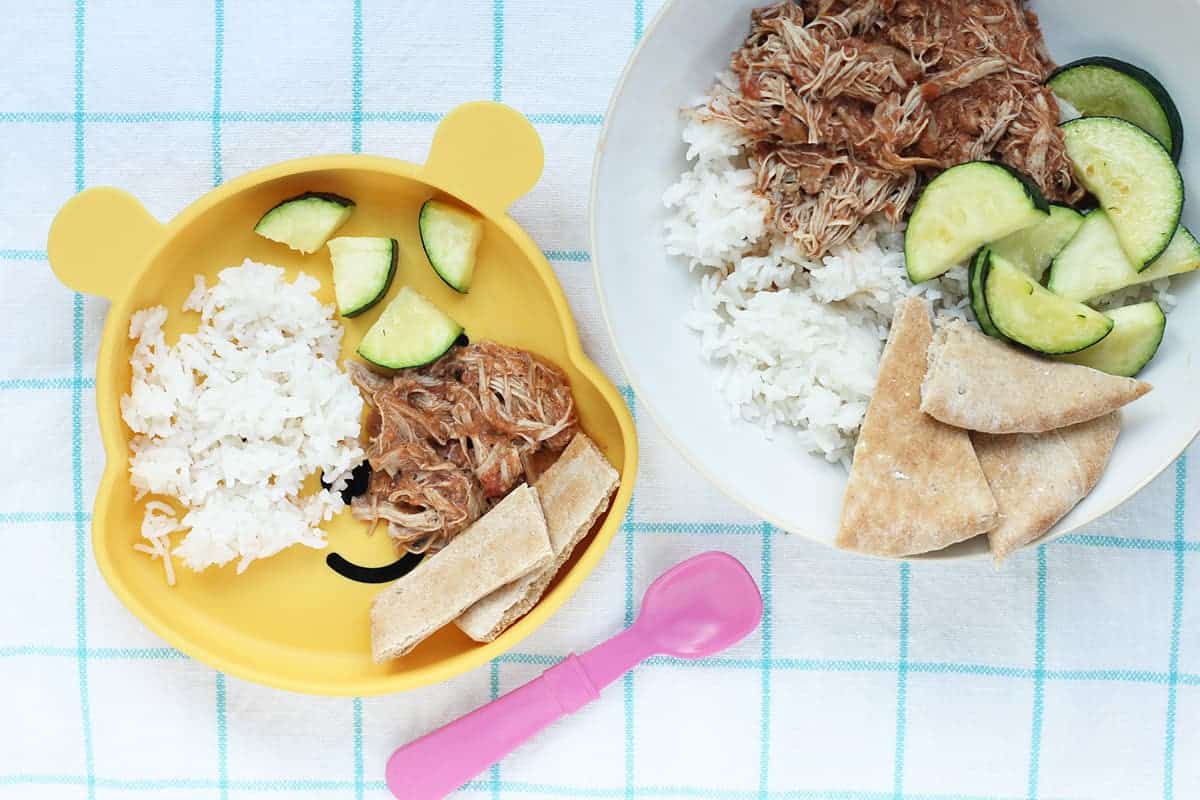
5. Take baby steps with new textures if needed
If your kid doesn’t like creamy things (mashed potatoes, pureed soups, yogurt), it’s possible that those foods are moving too quickly in their mouths—and the slippery feeling is uncomfortable. You can try serving those foods with some texture mixed in, such as serve just a little soup stirred into grains or as a dip with crackers. You can leave mashed potatoes chunky or drizzle a little yogurt over fruit.
Or, if they don’t seem to like meat, try a different texture. Breaded chicken might have a pleasing crunch or shredded chicken might be easier to chew.
Keep portions small so they can try foods without feeling overwhelmed and remember that learning to enjoy new textures is a process—and that it might be okay if your kiddo doesn’t like everything!
TIP: Read more on helping toddlers with texture aversions.
6. Let a particular food run out
It’s normal to sometimes eat all of one food and have to move on to others, so I try not to run to the store to replace a favorite food (unless it happens to be my normal day to shop). And I do vary the types of snacks we eat, some bars and crackers some weeks, others in other weeks. That may or may not work well for your child, but for my kids, it’s been helpful to learn that we sometimes have different versions of foods.
TIP: Find simple tips for helping kids try new foods here.
7. Know when to reach out for help
If you are worried that your child is only eating a few foods, I recommend writing down everything they eat for a few weeks. If the list is smaller than 20 foods, it might be very helpful to reach out to a feeding therapist (like my friends at Sunnyside Up Nutrition or Thrive with Spectrum) or try the Toddlers Course from Feeding Littles.
Related Posts
I’d love to hear your feedback on these tips, so please comment below.
This post was first published September 2015.
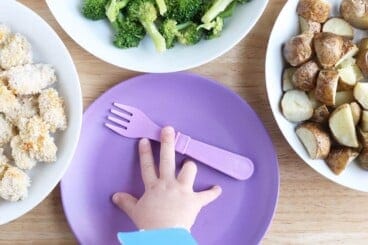

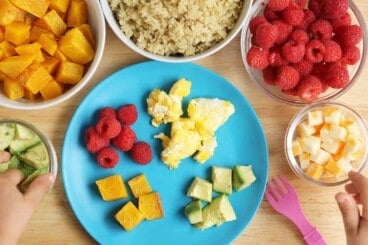
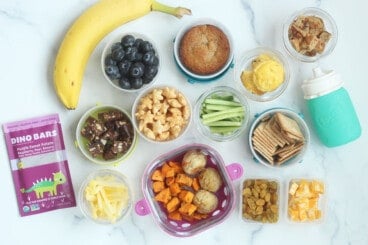
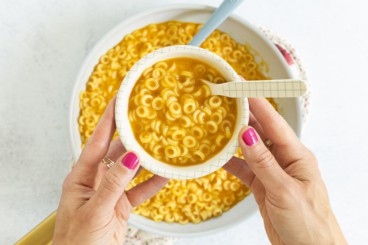




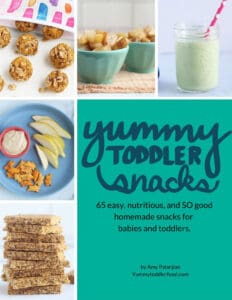















My grandson is 19 months old. He will only drink out of 1 bottle with a particular nipple. The only food he will eat is crackers or French fries. When given anything else (cup, banana, chicken nugget) he will put it in his hand and quickly throw it on the floor. My daughter cries because she feels like she if failing him. I don’t know how to get him to eat. Please help us.
Hi- If you haven’t considered this already, it may be time to reach out to a feeding therapist for individualized help. Or look at the courses from Feeding Littles as a place to start.
My toddler is nearly 3 and use to eat vegetables and meat and now he’ will only eat chicken nuggets chips and apples I have tried to introduce a lot of things but he won’t try them at all
My three year old child only eats pancakes, waffles, pizza, French toast, and water. That is it. He will not even eat at the table in his own. He will only eat spoon fed. We just took him off the bottle a week ago. So he will not drink milk from a sippy cup that he likes. Only water. Thank heavens. I have tried encorporating fruits, veggies, and grains into his daily meals and he will spit them out. I need help as a mother on how to get him proper nutrition. We have adapted into medicine drops. I just want him to try new things with out stressing him out. He is my very sensitive child. Any tips I would kindly appreciate.
Given the various things you mention, it may be worth looking into a local “responsive feeding therapist” or you could check out the Feeding Littles toddlers course, which is very thorough.
Yeah. I wish ours would eat anything fruit or vegetable like. She literally only eats three foods. Pancakes, peanut butter (on a spoon) and mystery yogurt (dye free go-gurt). Oh – and most candy – but that hardly counts. She drinks a fair amount of milk (chocolate) and will drink apple cider. But that is IT. And she is four almost five! We talk about and expose her to lots of foods – but she flat out refuses. And since she is not longer a toddler she is able to spring choice phrases on us like “I eat what I eat!” She used to eat cheese and applesauce – but that phased out. She used to eat peanut butter and jelly sandwiches – but no more. She doesn’t like anything hard or crunchy. I have a severely autistic nephew and even HE has more variety than she.
I’m sorry this is so frustrating! If you haven’t already, it might be time to reach out to a feeding therapist as a child with that limited of a diet usually benefits from some professional help. Let me know if you need some resources to find one!
My first thought at the headline, "awwww man….at least hers eats peas!!!"
Ha! That’s funny!
My 3yo has apparently developed an affinity for packaged foods. He loves yogurt drops… but only if they come in a bag. He eats granola bars… but not the homemade kind! Applesauce pouches of all sorts are welcome, but he doesn’t trust the refillable kind. I think he’s figured out that prepackaged foods tend to have higher sugar and salt contents and he doesn’t trust me not to trick him into eating something healthier!
Hi, I’m glad to read this post, I’m not alone… My boy stopped trying almost everything around 2 and now he’s 3 and a half and only eats crackers peanut butter, some fruits and yogurt… I need to give him pediasure to complement him I’m going crazy… He’s heslthy and growing but says yak to every food and runs away when we eat ? He went to feeding therapy and it made it worse… 6 months ago I let him starve if he didn’t eat what I offered for 2 days till day 3 he was lethargic… Did not try anything maybe I sgshould try that again too see if it works… Any advise is very welcome!!! I don’t know what to do anymore.
I am in this boat now. My son is about to turn 4 next month and only eats crackers, raisins, yogurt, tater-tots and I’ve gotten him to eat chicken nuggets in the shape of letters. That’s IT! No meat, no fruit, no veggies. I have to give him PediaSure every morning as well. I have tried starving him, punishing him, tried forcing food on him, everything in the book! I don’t know what else to do! I see you posted a while ago, did your son grow out of this? What did you end up doing??
Honestly, if things are that bad and it’s really that limited, make an appointment with your Pediatrican and ask for a referral to a feeding therapist. They are the best resource when things get that limited. I also like the book Extreme Picky Eating. Hang in there and good luck!
This is a great post! My little guy just turned one, and introducing new foods has been HARD. I feel like when I try and he resists, I let him sit in his chair for a bit, sometimes he’s quiet and will nibble, other times he screams and then I give in and give him something he is familiar with. I thought he’d love pasta, but no, not at all. And he seems to only like bbq chicken, not chicken cooked any other way. I get so frustrated and feel like he must be starving, but I’m so glad I’ve found your website because it has given me a confidence booster and some great ideas to try! Thanks for what you do 🙂
I’m glad you found the site too! And I know it’s hard, but I hope that some of the posts here help—and remember, he has very little idea as to what new foods will taste like, so some wariness is helpful. Try to keep offering variety and new things alongside familiar items each day and he’ll eventually learn to like more things. (I know it won’t seem like it day in and day out, but it will in the long run!) P.S. BBQ chicken is delicious:)
Great post. Super helpful! My main problem is a small house where we have an exposed pantry right in front of where my son eats, so he has a wide open view of everything we have in the house.
Oh man, that surely creates some challenges! You could: take food out of packages (like crackers/cereal and such) and put it into solid canisters with word labels. He might eventually catch on to what’s inside, but that might help lessen the visual distraction. Could you put up a curtain? Turn his chair? I realize that there are space constraints so you might not have many options. (I actually keep some of our pantry foods in a separate closet in the dining room so my daughter never sees the Cheerios box. Again, possibly not helpful in a small apartment, but if you have a shelf somewhere else that you could use for the things that he gets focused on, that might be a good solution.)